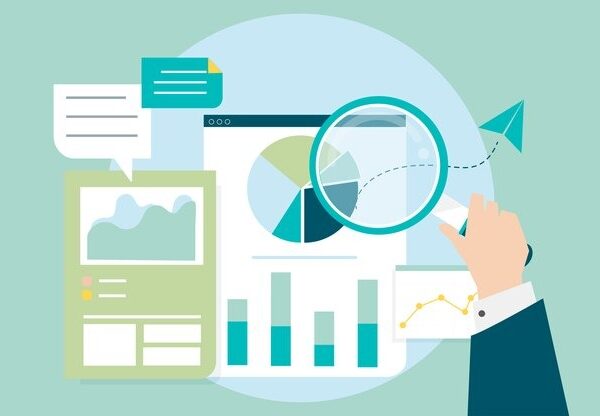Qualitative Data Analysis: Online, Software, and Computer Assisted

Qualitative Data Analysis: Online, Software, and Computer Assisted
Explore our Qualitative Data Analysis solutions with online tools, advanced software, and computer-assisted methods for efficient insights.
In today’s data-driven world, understanding the nuances of qualitative data analysis is essential for making informed decisions. At Rapid Phone Center, we specialize in harnessing the power of qualitative data to drive insights and enhance customer experiences. This guide will explore the various aspects of data analysis, including techniques, software options, and best practices to effectively analyze qualitative data.
At Rapid Phone Center, we offer the best software for data analysis, designed to elevate your research capabilities. Our state-of-the-art tools simplify the collection, coding, and interpretation of data from various sources, including interviews and focus groups. With user-friendly interfaces and powerful analytical features, our software enables you to extract meaningful insights efficiently, empowering you to make informed decisions and drive impactful results in your projects.

Data Analysis Qualitative: Exploring Methods and Applications
Qualitative data analysis refers to the process of examining non-numeric data, such as text, audio, video, or images, to derive meaningful insights. This type of analysis is crucial for understanding complex phenomena and exploring the richness of human experiences, behaviors, and perceptions.
Qualitative analysis of data is essential for:
- Exploring Rich Contexts: It helps researchers delve into the context surrounding a particular phenomenon.
- Understanding Human Behavior: Qualitative data analysis provides insights into motivations, feelings, and emotions that drive human behavior.
- Generating Hypotheses: The analysis of qualitative data can generate new hypotheses that can be tested through quantitative research.
At Rapid Phone Center, we specialize in analysis for data to help businesses gain actionable insights. Our expert team utilizes advanced methodologies to interpret complex qualitative information, transforming it into valuable strategies. By focusing on patterns, themes, and narratives, we ensure that our clients understand the nuances of their data, enabling informed decision-making and effective solutions tailored to their needs. Rapid Phone Center specializes in Software Data Analysis, offering tailored solutions that enhance decision-making and optimize performance.
Qualitative Data Analysis Online: Best Practices and Strategies
There are several methods for conducting data analysis, including:

- Thematic Analysis: Identifying patterns or themes within qualitative data.
- Grounded Theory: Developing a theory based on data collected.
- Content Analysis: Systematically coding and categorizing content to identify its presence or frequency.
- Narrative Analysis: Analyzing the stories people tell to understand their experiences.
Rapid Phone Center offers cutting-edge data analysis softwares designed to streamline your research process. Our tools empower businesses to easily manage, code, and analyze qualitative data, uncovering valuable insights from interviews, surveys, and focus groups. With user-friendly interfaces and advanced features, our software enhances your ability to identify trends and patterns, ensuring you make informed decisions that drive success in your projects.
Rapid Phone Center specializes in computer assisted data analysis software that enhances your research efficiency and accuracy. Our advanced tools allow users to effortlessly collect, code, and analyze qualitative data from interviews, focus groups, and open-ended survey responses. With intuitive interfaces and powerful features, our software streamlines the analysis process, enabling you to uncover rich insights and trends that drive informed decision-making and strategic planning. Rapid Phone Center provides clear Analysis of Data Examples to illustrate effective strategies for data-driven decision-making.
Online Qualitative Data Analysis
With advancements in technology, online data analysis has become increasingly popular. Researchers can now leverage various tools and platforms to conduct qualitative research data analysis remotely. This approach offers flexibility and convenience, allowing teams to collaborate seamlessly from different locations.

Effective data analysis for qualitative research involves several steps:
- Data Collection: Gather qualitative data through interviews, focus groups, or open-ended surveys.
- Transcription: Convert audio or video data into text format for analysis.
- Coding: Identify and label key themes or concepts within the data.
- Interpretation: Analyze and interpret the coded data to derive insights.
- Reporting: Present the findings in a clear and understandable format.
At Rapid Phone Center, we provide top-tier software for analysis of data that revolutionizes your research experience. Our innovative tools enable users to efficiently code, organize, and interpret qualitative information, transforming raw data into actionable insights. With robust features and an intuitive interface, our software simplifies the complexities of analysis, empowering businesses to make informed decisions based on deep understanding and clarity. Rapid Phone Center explores various Data Analysis Methods, equipping businesses with insights to drive growth and improve strategies.
At Rapid Phone Center, we provide innovative software for analysis qualitative data that transforms the way businesses conduct research. Our powerful tools enable seamless data collection, coding, and interpretation, making it easy to extract meaningful insights from interviews, surveys, and focus groups. With intuitive interfaces and robust analytical features, our software streamlines the research process, empowering organizations to make informed decisions based on comprehensive analysis.
Qualitative Research Data Analysis Software
When choosing software for qualitative data analysis, consider the following factors:

- Ease of Use: Ensure that the software is user-friendly and suitable for your level of expertise.
- Compatibility: Check if the software supports various data formats relevant to your research.
- Collaboration Features: Opt for software that allows multiple users to work together seamlessly.
- Customer Support: Look for software that provides reliable customer support and resources.
Rapid Phone Center delivers advanced software data analysis, designed to enhance your research capabilities. Our user-friendly platform allows businesses to easily collect, code, and interpret qualitative data from interviews, surveys, and focus groups. With powerful analytical tools and customizable features, our software simplifies the process of uncovering insights, enabling informed decision-making and strategic planning for better outcomes in your projects.
Rapid Phone Center offers a range of powerful softwares for data analysis that cater to your research needs. Our innovative tools facilitate the seamless collection, coding, and interpretation of data from various sources such as interviews, focus groups, and open-ended survey responses. With user-friendly interfaces and advanced features, our software helps you uncover valuable insights and patterns, empowering your decision-making and driving successful outcomes in your projects. Rapid Phone Center excels in Outbound Sales, employing targeted strategies to enhance customer engagement and boost revenue growth.
The Analysis of Qualitative Data
Conducting a thorough analysis of qualitative data involves careful consideration of various factors. Here are some best practices to keep in mind:

- Establish Clear Research Questions: Define what you want to achieve with your analysis.
- Maintain Objectivity: Aim to approach the data without bias, allowing the findings to emerge naturally.
- Use Multiple Coders: If possible, involve multiple team members in the coding process to enhance reliability.
- Triangulate Data Sources: Validate findings by comparing results from different data sources.
Qualitative data analysis is a vital component of research that enables organizations to gain deeper insights into their audiences. At Rapid Phone Center, we understand the importance of leveraging analysis data to inform our strategies and enhance our services. By utilizing the best data analysis software and following best practices, we can effectively analyze data to meet the needs of our customers. What is omnichannel customer service? It’s a seamless support experience across multiple channels, ensuring consistent and personalized interactions.
Whether you’re just starting your research journey or looking to refine your analysis techniques, we encourage you to explore the diverse world of qualitative data analysis. With the right tools and strategies, you can uncover valuable insights that drive growth and success for your business.
Frequently Asked Questions
Explore our Frequently Asked Questions for qualitative data analysis at Rapid Phone Center to enhance your research and insights! Rapid Phone Center focuses on effective Lead Generation strategies, helping businesses identify and convert potential customers successfully.

What is qualitative data analysis?
Data analysis involves examining non-numerical data, such as text, images, or audio, to identify patterns, themes, and insights. It focuses on understanding participants’ perspectives, experiences, and meanings within the context of a research study.
What is coding in data analysis?
Coding is the process of categorizing and tagging segments of data with labels that represent themes or concepts. It helps to organize data and facilitates the identification of patterns.
How long does data analysis take?
The time required varies based on the volume of data, complexity of the study, and depth of analysis. It can range from a few weeks to several months. Rapid Phone Center offers Omnichannel Customer Service, ensuring seamless communication across platforms for enhanced customer satisfaction.

Can data analysis be quantitative?
While data analysis primarily focuses on non-numerical data, some researchers employ mixed methods, integrating quantitative elements to complement findings.
You may also be interested in our articles:
Good Luck to You, Thanks





